|
|

|
 |
| Forum: | Satellites - Robotic Probes |
| Topic: | [Discuss] ispace HAKUTO-R Mission 1 |
|
| Want to register?
|
If you have previously registered, but forgotten your password, click here.
| | Robert Pearlman | ispace CEO Takeshi Hakamada: At this moment, we haven't been able to confirm a successful landing on the lunar surface. Our engineers at MCC are continuing to investigate the current status of the lander. Currently, we have not confirmed the communication from the lander. We already confirmed that we have established the communication until the very end of the landing. However, now we lost the communication, so we have to assume we could not complete the landing on the lunar surface. Our engineers will continue to investigate the situation and then we will update you the further information once we finish the investigation. At this moment, what I can tell is we are very proud of the fact that we have already achieved many things during this Mission 1. As I said, we have been secured the communication at the very end of the landing. That means we acquired actual flight data during the landing phase. That is great achievement for the future missions, Mission 2 and the Mission 3. To that end, it is important to provided feedback of what we learned from this Mission 1 to Mission 2 and Mission 3. That's why we built our sustainable business model to continue our effort for the future missions. I'd like to thank you, all the employees who have who have contributed to this mission since the beginning of this company and then to the present, and also our families who continued to support us, and our shareholders, our partners and our customers and their suppliers and everyone who believed in ispace vision. We will keep going. Never quit the lunar quest. Earthrise as captured by the Hakuto-R Mission 1 lunar lander on April 20, 2023: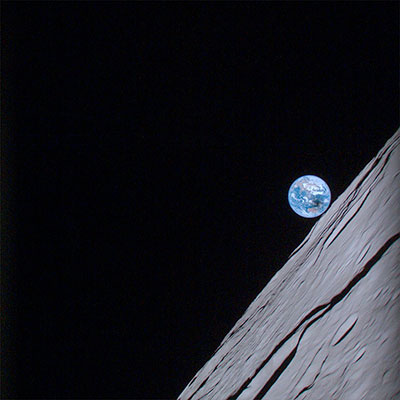 | | NukeGuy | That photo captures the shadow over Australia/South Pacific of the April 20, 2023 solar eclipse. | | Moonwalker1954 | This is an incredible picture! This is the first time, I think, that we witness a solar eclipse from the Moon. That brings a new perspective of the phenomenon. | | Robert Pearlman | LROC (Lunar Reconnaissance Orbiter Camera) release Impact Site of the HAKUTO-R Mission 1 Lunar Lander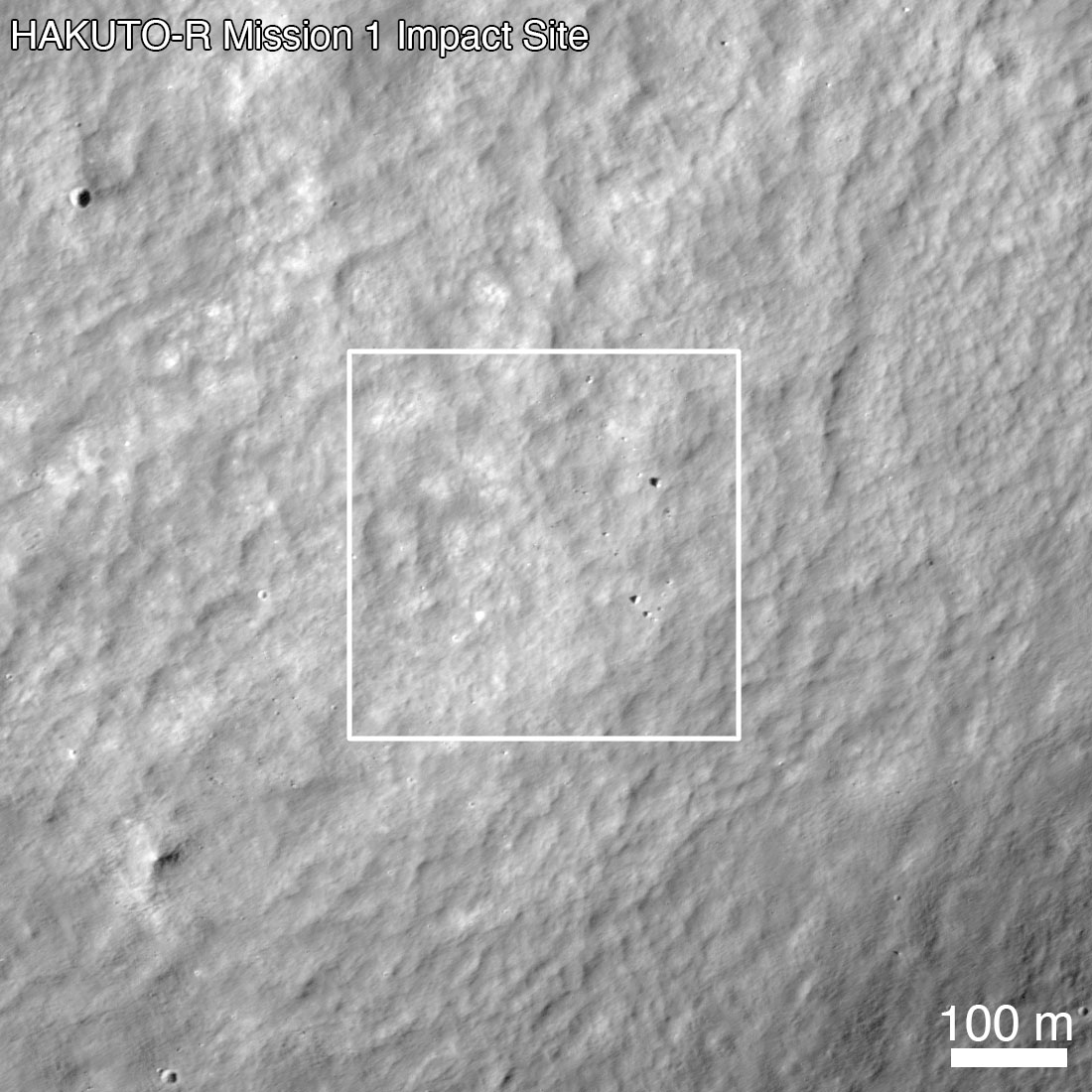 Above: HAKUTO-R Mission 1 Lunar Lander impact site, as seen by LROC the day after the attempted landing. LROC NAC image M1437131607R. (NASA/GSFC/Arizona State University) The HAKUTO-R Mission 1 Lunar Lander was launched on 11 December 2022, hoping to become the first privately-funded spacecraft to land and operate on the lunar surface. After a several-month journey to the Moon, the spacecraft started a controlled descent to the surface to land near Atlas crater. Moments before the touchdown on 25 April at 12:40 p.m. EDT, communication with the lander ceased. The ispace team announced the following day that an anomaly occurred, and the HAKUTO-R Mission 1 lunar lander did not safely touch down on the surface. 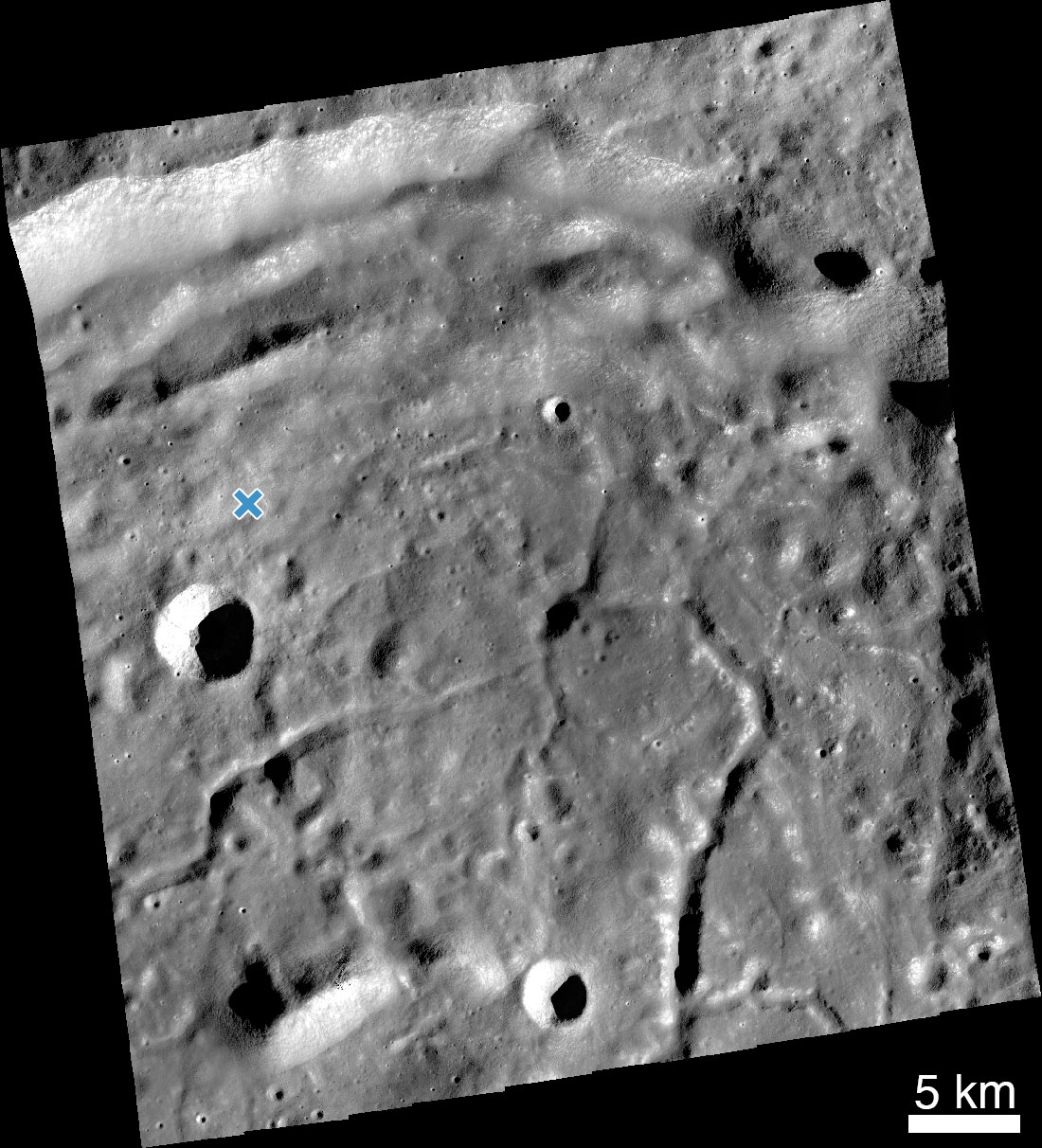 Above: LROC NAC mosaic of the HAKUTO-R Mission 1 Lunar Lander impact site made from five NAC image pairs: M1437138630L/R, 1437131607L/R, M1437124584L/R, 1437117561L/R, M1437110537L/R. The blue cross marks the impact site. (NASA/GSFC/Arizona State University) On 26 April 2023, the Lunar Reconnaissance Orbiter (LRO) spacecraft acquired ten images around the landing site with the Narrow Angle Cameras (NACs). The images covered a region roughly 40 km by 45 km. Using a NAC image acquired before the landing attempt, the Lunar Reconnaissance Orbiter Camera (LROC) science team began searching for the lander. 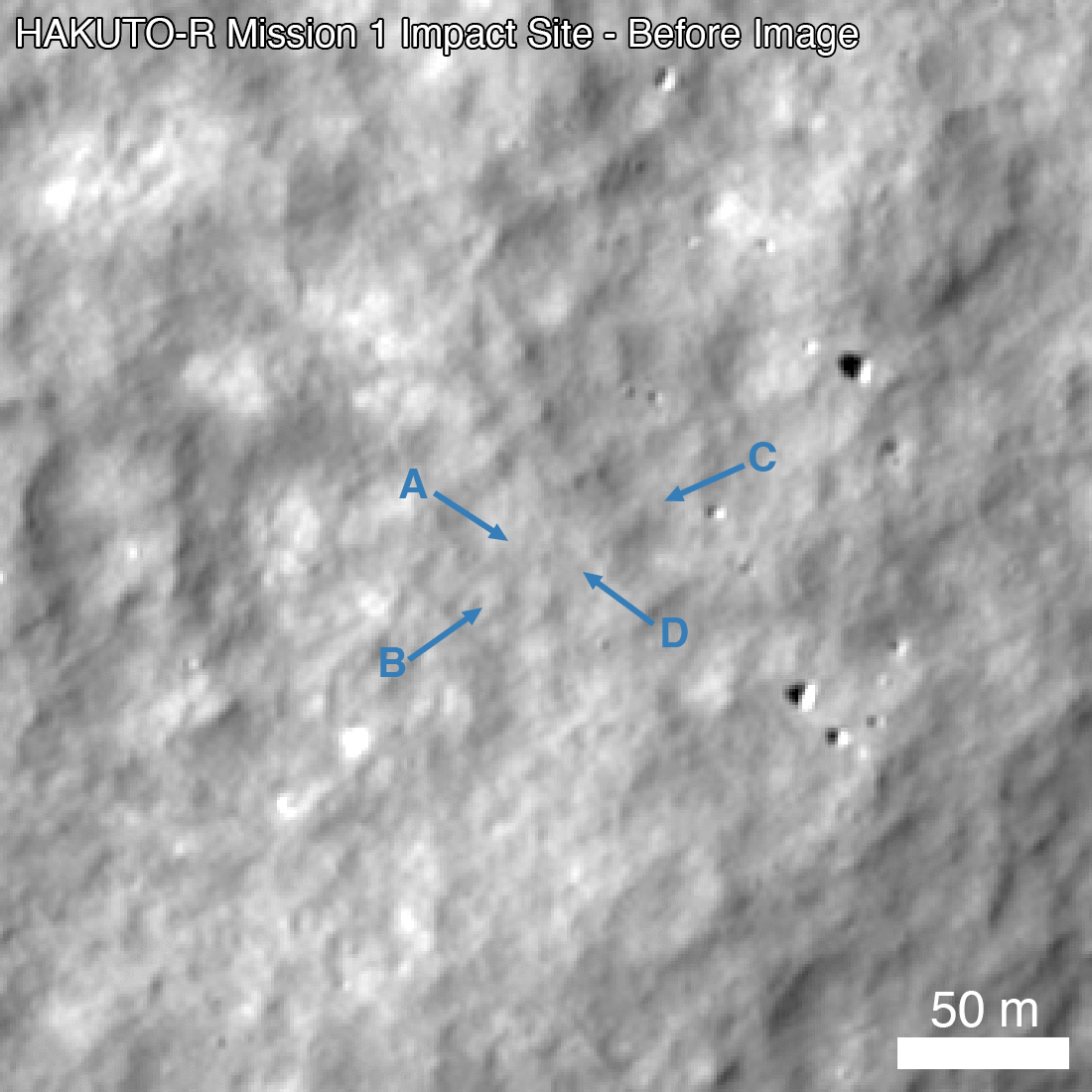 Above: Before (M192675639R) and after (M1437131607R) comparison of the impact site. Arrow A points to a prominent surface change with higher reflectance in the upper left and lower reflectance in the lower right (opposite of nearby surface rocks along the right side of the frame). Arrows B-D point to other changes around the impact site. (NASA/GSFC/Arizona State University) From the temporal image pair, the LROC team identified an unusual surface change near the nominal landing site. The image shows at least four prominent pieces of debris and several small changes (47.581°N, 44.094°E). The central feature in the image above shows several bright pixels in the upper left and serval dark pixels in the lower right. This is the opposite of nearby boulders, suggesting this could be a small crater or different parts of the lander body. This site will be analyzed more over the coming months as LROC has the opportunity to reimage the site under various lighting and viewing geometries. 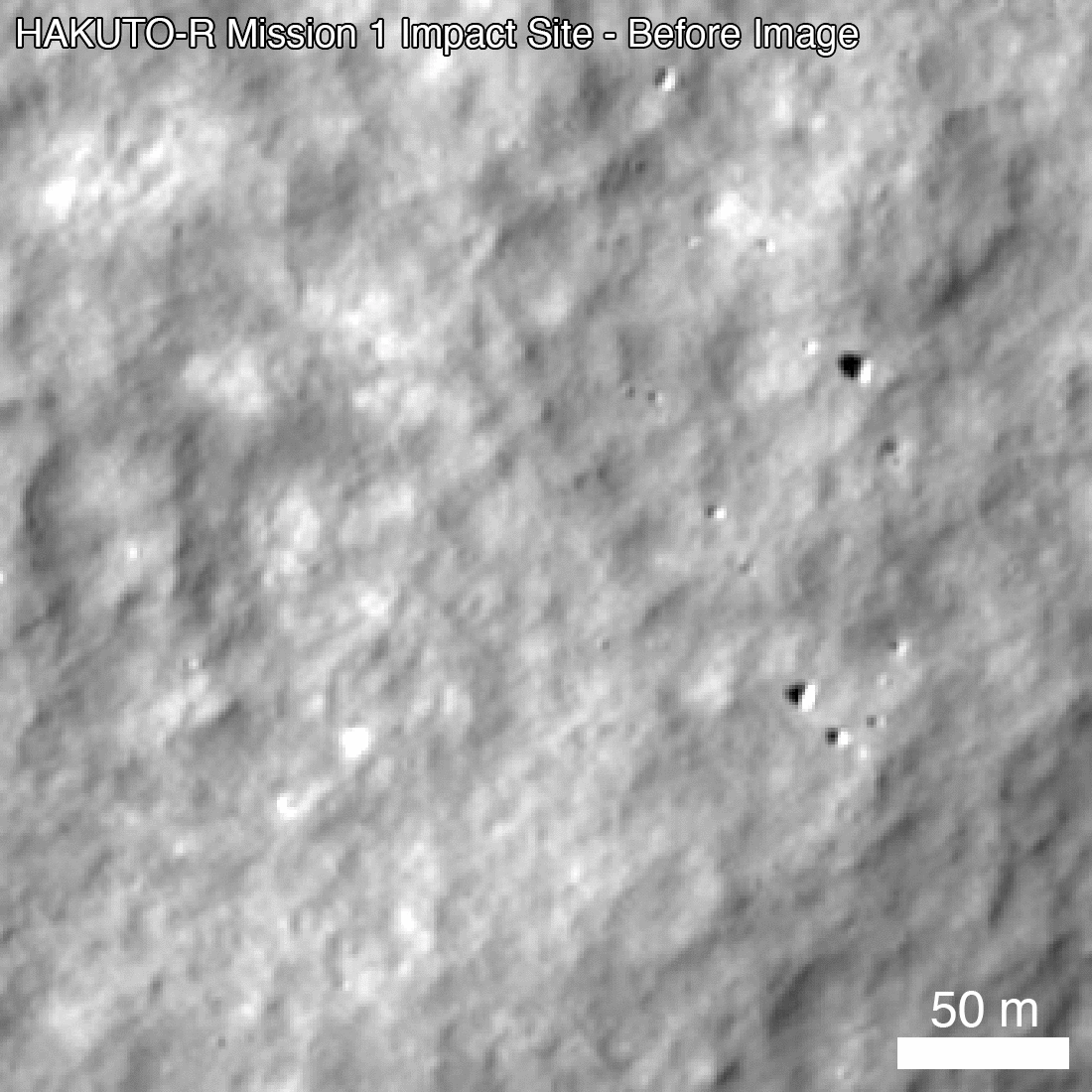 Above: Before (M192675639R) and after (M1437131607R) comparison of the impact site without annotations. (NASA/GSFC/Arizona State University) 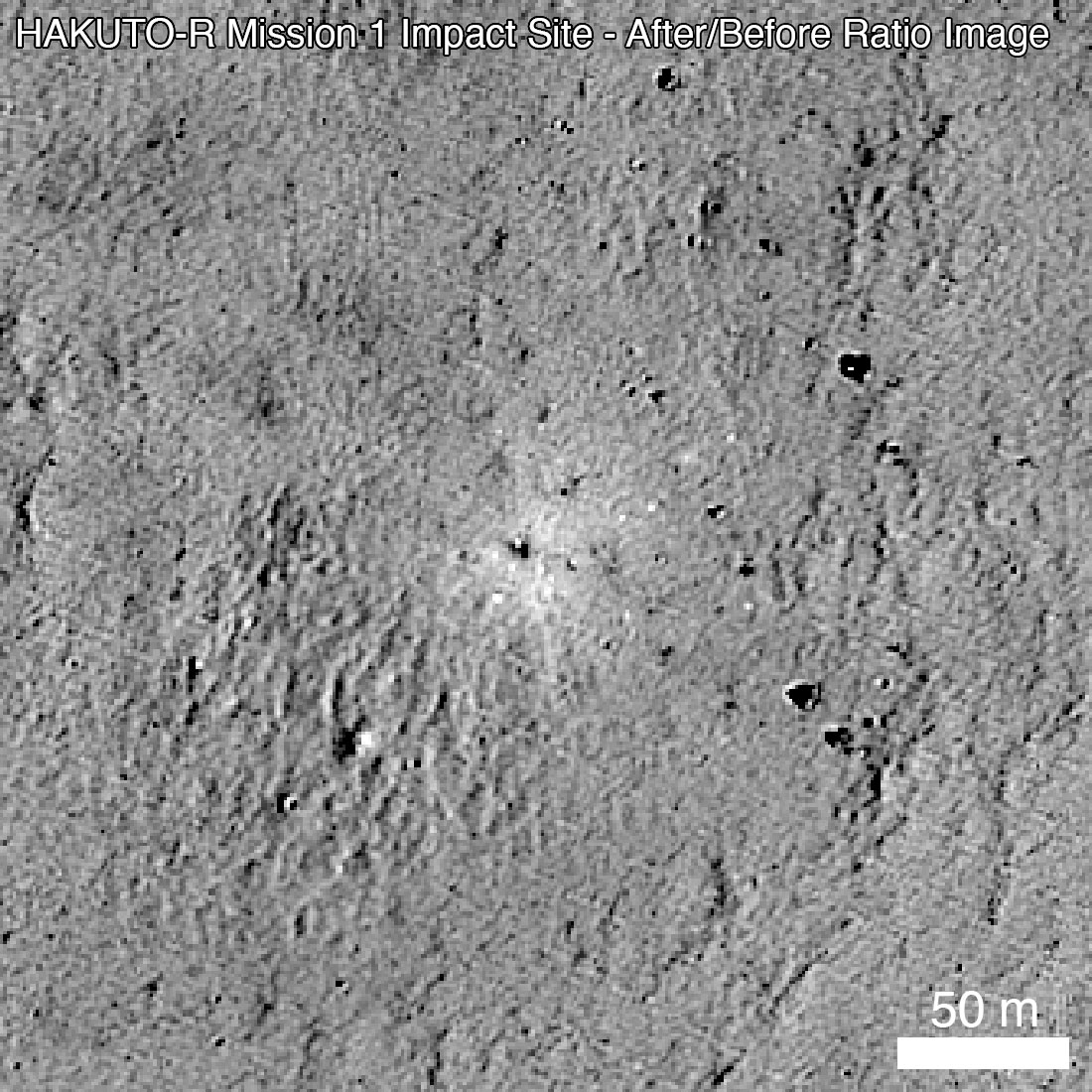 Above: Ratio image created by dividing the after (M1437131607R) and before (M192675639R) images. The impact created an area of higher reflectance, approximately 60-80 m across. (NASA/GSFC/Arizona State University) | | GACspaceguy | I am assuming the data shows that it impacted and what we are seeing is not out flow from the engines firing to touchdown. | | Robert Pearlman | Per the report released by ispace today, the engines cut off before reaching the surface, leaving the lander to fall the rest of the way down. While the lander estimated its own altitude to be zero, or on the lunar surface, it was later determined to be at an altitude of approximately 5 km above the lunar surface. After reaching the scheduled landing time, the lander continued to descend at a low speed until the propulsion system ran out of fuel. At that time, the controlled descent of the lander ceased, and it is believed to have free-fallen to the Moon's surface. | |







